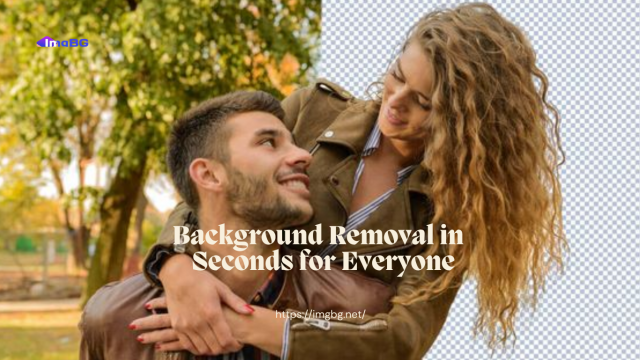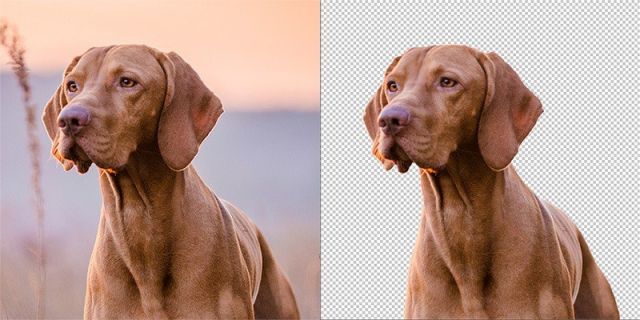ImgBG.net: Background Removal in Seconds for Everyone
- Oct 19, 2023
- 1008

A Comprehensive Look into Background Removal

In order to set the foreground subject on a new background, background removal involves choosing the foreground subject in an image and deleting the background. As seen below, this is accomplished with the aid of a mask made during the removal procedure. Composition is the process of setting the topic against a fresh background.
Because the human eye is prone to seeing differences in photographs, extra effort needs to be made to ensure that the extracted subject's composition seems realistic on a new background. For fragile structures like hair and fur, this can be challenging.
Composition allows us to reuse photographs by placing them on formal or imaginative backdrops. There are two key obstacles to developing a completely automated background removal system:
1. Identifying the foreground subject without human input: Our model needs to recognize and manage the topic even if it has never been seen before because the foreground subject can be any of a wide variety of objects, including people, animals, gadgets, apparel, furniture, and more. It can also be challenging to handle interactions with recognized subjects, such as a human sitting in a chair or playing basketball.
2. Accurately predicting a mask: the mask should only encompass the area of interest. Furthermore, a lot of materials, like human hair and fur, have complex, semi-transparent structures that need to be handled carefully to guarantee accurate extraction and realistic composition.
Practical Uses for Background Removal
We will go into further detail about these issues and provide examples in the following section. Let's examine a few uses of background removal for the time being:
1. Reuse photos: Make greater use of the material you already have.
2. E-commerce: Prepare your product photos to look better on any e-commerce site.
3. Media/Creative: Show off your artistic side and produce breathtaking stuff.
4. Passport and Profile Photos: With a few clicks, create gorgeous profile photos. Take passport pictures anywhere to avoid standing in line.
5. Logos, Signatures, and Graphics: Highlight your company or creative endeavors.
Obstacles
Our objective is to generate a mask automatically in order to extract the image's foreground object. There are two primary obstacles to achieving this:
1. She recognizes the subject in the front automatically.
2. Accurately predicting a mask for a realistic composition
A machine cannot easily identify the foreground object like a human can. This challenge will have to wait for a later blog article as we concentrate on the second one in this one.
Image segmentation is a popular method for creating masks. It involves giving each pixel in an image a binary value—yes or no—indicating whether or not it belongs to the subject. The item can then be extracted using this mask, as demonstrated below.
It is evident that image segmentation performed flawlessly in this instance. However, as can be seen below, image segmentation is ineffective in more complicated scenarios, such as those with fine hairs. Something is off with the extraction, even though the mask hides the hair pixels. This is due to the subject's hair, which is partially translucent in spots and combines with the background's color and lighting to create the soft tone seen in the original photo.
In this situation, we'll need a transparency mask or alpha matte for proper extraction, as illustrated below. Even in areas where foreground and background elements interact deeply, such a mask can effectively divide them.
Since compositions made from backdrop removal are frequently utilized for eCommerce or media purposes where humans would be viewing them, the masks developed must be extremely accurate. Let's discuss three elements that affect how realistic a composition is:
- Decontamination of color
- tiny spaces
- Blending alpha
Decontamination of color

To avoid such problems, algorithms need to comprehend how the foreground and backdrop interact in terms of color and illumination. Making such a mask by hand would be challenging and time-consuming for even a human, which is where background removal comes in handy.
Tiny spaces

Composing on a fresh background might reveal noticeable visual inconsistencies, even from minor mask flaws, such as missing tiny gaps. The original image is shown at the top below, while masks created using two algorithms are shown on the right.
One can observe a variety of mistakes in the first mask. When the subject is put on the green background, the large gaps, like the one near the shoulder, are easily visible, as are the small ones inside and around the curly hair. If these spaces are not filled in, the new background will have portions of the previous one overlaid on it, giving the picture an artificial appearance.
Blending alpha

Let's examine how realistic composition is facilitated by our transparency mask. The amount of background and foreground color that should be present in each pixel is indicated by our transparency mask.
For instance, we may combine 40% background and 60% foreground color at a specific pixel. This kind of blending gives the impression that the subject was actually there, interacting with the lightning in the new background.
Additionally, compositions appear more aesthetically pleasing and natural, with fewer jagged edges. We don't want the background to begin suddenly when we're writing.
A seamless transition from the foreground topic to the backdrop is what we're going for. To demonstrate, we place a tiny patch of brown hair in c) that was taken from the stuffed toy's corner above on the vivid background in a) below.
When we blend in b) with the aid of our mask, we observe a fluid color transition and interaction in the composition created in d), giving the impression that the subject was real and engaging with the new background's lightning. We do not cover more complex methods for assembling backdrops and subjects from various lighting situations here.
In summary, we observed that background removal is a challenging procedure that necessitates accurate transparency prediction. The elimination method generates a map, which we can use to extract the topic and create a new background.
We talked about three key factors that impact the compositions' realism as well as the degree of precision and information one may anticipate from algorithms that try to generate these masks. We will discuss advanced machine learning and computer vision techniques in a later post, which are necessary to do this.
We hope that after reading this article, you will have a better understanding of background removal and all of its uses. Try out our background remover, ImgBG.net, which will shortly launch with a new website, to see all of this in action. Follow us here for further updates.